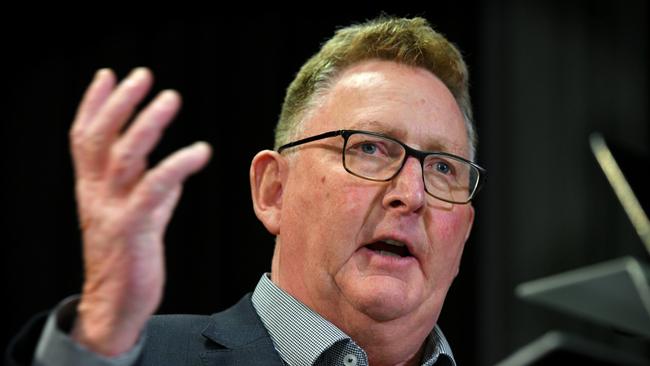RBNZ signals interest rate hikes are done after latest rise
A widely expected interest rate rise by the Reserve Bank of New Zealand had less impact than its signal that it’s done with rate increases, sparking a rebound in shares.
A widely expected interest rate rise by the Reserve Bank of New Zealand had less impact than its signal that it’s done with rate increases, sparking a rebound in shares and sell-off in the Kiwi.
What surprised the market the most was the fact that the RBNZ’s monetary policy committee only considered two options – no change, or a 25-basis-point rise.
It took the unusual steps of voting on those options, then communicating the five-to-two majority decision to lift rates by 25 basis points.
The decision to lift the cash rate from 5.25 per cent to 5.5 per cent was expected by most economists. But a few had expected a 50-basis-point rise on account of surging immigration and an expansionary national budget.
But with 50bps not even considered and the cash rate still projected to peak at 5.5 per cent, the NZX-50 index staged a 1 per cent rebound and the NZ dollar dived 1.3 per cent against the US dollar as the benchmark two-year swap rate dived 35bps.
The RBNZ did say the cash rate “will need to remain at a restrictive level for the foreseeable future” in order to “ensure that consumer price inflation returns to the 1-3 per cent annual target range while supporting maximum sustainable employment”. But it was “confident that with interest rates remaining at a restrictive level for some time”, inflation would return to its target.
From its March quarter level of 6.7 per cent, the annual rate of headline inflation is not expected to hit the top end of its target range until the second half of 2025. But the RBNZ sounds more patient as it also predicts that a minor technical recession will start in the current quarter.

Views among economists are now split between those concerned that high immigration and budget stimulus will cause additional inflationary pressure, and those who think immigration will have a bigger deflationary impact on wages growth and that the budget won’t significantly boost demand.
BNZ said it appeared the RBNZ integrated much of the fiscal easing that was confirmed in the budget into its April decision, especially the spending associated with recent floods.
“Had the 50 not been delivered in April, today’s decision might have been between a 25 and a 50-point move rather than the 0 or 25 that was discussed,” BNZ chief economist Mike Jones said.
And at least for now, the RBNZ believes the deflationary impact on wage growth from higher immigration will outweigh the inflationary impact emanating from the increase in demand.
Capital Economics economist Abhijit Surya said the RBNZ’s updated forecasts suggested it had probably finished lifting interest rates. “With the bank having revised down its near-term forecasts for both headline inflation and the output gap, we do think there’s a good chance its hiking cycle is now over,” he said.
Mr Surya also said the RBNZ was likely to cut rates late this year. “As we’ve learned time and again, when central banks move fast, they tend to break things and there’s no reason to think this time will be different,” he said.
But Westpac chief economist Kelly Eckhold saw inflation risks from surging immigration.
Migration pressures were acknowledged, but the RBNZ took a sanguine view on the strains that could be caused by a forecast net inflow of 75,000 people in the year to December.
“Migration is seen as having some supportive impact on house prices but not as much as we have forecast in our recent economic overview,” Mr Eckhold said.
“The bottom line is that this is a central bank that sees itself on hold for a protracted period.
“Key risk factors are likely to be around the judgment of the RBNZ that the quite significant boost in population growth will quickly reverse and not add to housing market or inflation pressures.”
Mr Eckhold sees potential for another rise of 25bps in August. “Should this not eventuate we anticipate the RBNZ to remain on hold until after the election in October,” he said. “By this time we expect that the housing market and migration pressures will be showing up fairly strongly and require a further adjustment in the OCR to 5.75-6 per cent.”
The RBNZ played down migration, noting its impacts were “uncertain”, while on fiscal policy it noted that it would be “less contractionary” than appeared the case in February.
“This is a pretty mild take on things, in our view,” ANZ chief economist Sharon Zollner said.
“We see the risks as balanced around our forecast peak OCR of 5.75 per cent, but there is clearly a risk that the RBNZ takes longer to get there than our forecast of another 25bps hike in July.”
Ms Zollner said it was worth remembering the experience of 2007-08, when the RBNZ paused twice – for the first six months and then for more than a year – only to resume lifting rates.
“A pause is not necessarily a peak, though the market will undoubtedly take it that way.”






To join the conversation, please log in. Don't have an account? Register
Join the conversation, you are commenting as Logout